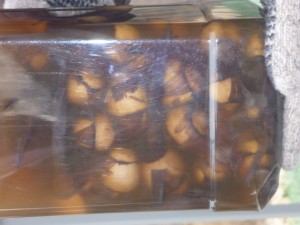 Dan Jackson, President of the La Crosse Audubon Club has sent us a detailed report on his observations over the past weekend. This IS THE TIME to get out on the river!! Thanks so much, Dan!
Dan Jackson, President of the La Crosse Audubon Club has sent us a detailed report on his observations over the past weekend. This IS THE TIME to get out on the river!! Thanks so much, Dan!
A few observations:
This morning, Monday, 11/11, Ruth and I were able to get a fairly good ground count on the number of swans using the Wisconsin Islands Closed Area. The number was 22,000+ with main concentration areas in Raft Channel West, below Horseshoe and Boomerang Islands, and on the sand flats below/between seed islands along Raft Channel. Yesterday, in the Shady Maple portion of the Goose Island No Hunting Zone, I counted about 2,000 tundra swans with what appeared to be new arrivals late in the day, 500-600 Canada geese, 300-400 pelicans, and 10,0000+ ducks (gadwall, pintails, wigeon, and mallards). The Beiers Lake portion of the no hunting zone was also loaded with birds, but there is limited visibility from the overlook, hence an incomplete count.
People are learning about the large concentrations of birds visible from the overlooks and the fact we are staffing the overlooks on weekends, and responding accordingly. To that end, we had nearly 1,200 visitors this past weekend at the overlooks.
Visitors are asking how long the swans will be here. For those asking the question and mean how long will they be on the Refuge, the answer is there will be swans here until the river freezes. For those who mean how long will they be here in the numbers seen this past weekend and near the overlooks, that is a bit more complicated. A few swans may leave with this brief cold snap, but be replaced by others moving in from other staging areas on the river or elsewhere.
We are going to begin seeing swans move around the closed areas in response to the need for thermal cover, i.e., this morning’s conditions, and as their food resources are depleted, i.e., the large bed of arrowhead plants in front of the Brownsville Overlook.. Some of the latter is already occurring. On Sunday morning, one group of hunters mentioned that the area they hunted in the morning was full of swans. The swans likely fed all night and moved back to the closed area when disturbed by the hunters. This is a common occurrence, but seems to be early this year.
Further, this morning, we saw groups of swans, and ducks, tucked into more “out of the way” areas where small patches of arrowhead are present. On calm days, the swans will likely move to open water water areas away from the islands in search of winter buds of wild celery. It also amazing to watch swans feed in the middle of the large wild rice beds.
With the forecast for warming beginning about mid-week and continuing through next weekend, we should have excellent conditions for viewing next weekend. Another large turnout of visitors is likely.
There are a number of bus tours, or other groups, scheduled to be at the overlooks this week.
Long-time river observers are saying they have never seen, or it has been a long time, since they have seen the number of waterfowl now present in lower Pool 8!

